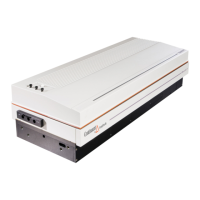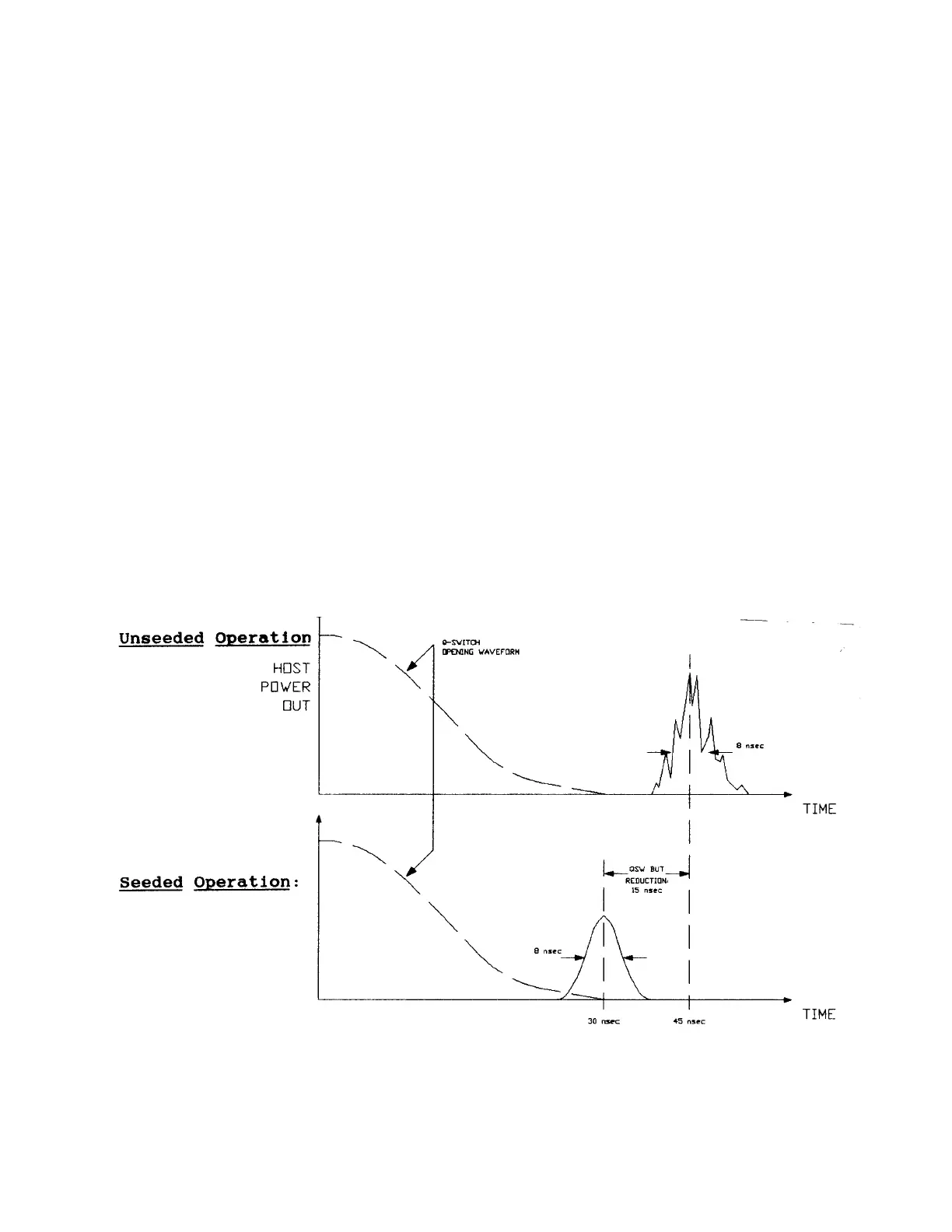4
1.1.4 Frequency Control of the Host Laser
In the previous section reference was made to injecting seed radiation with the proper
frequency characteristics into the host cavity. Since the seed and host cavities are independent
entities, some form of frequency control and stabilization are required. The standard approach is to
accurately stabilize the frequency output of the seed laser. Frequency overlap is then achieved via
active control of the host laser’s cavity length (frequency).
In practice the high reflecting mirror of the host resonator is mechanically translated by a
piezoelectric element (piezo). Using a piezo as the active element in a feedback loop provides a
way to lock the frequency of a host cavity mode to the seed frequency.
Since the temperature of the Nd:YAG rods of the host laser effects the effective cavity length
of the host laser, it is also necessary to stabilize the temperature of the Nd:YAG rods in the host
laser. This is done by temperature stabilizing the internal cooling water which cools the Nd:YAG
rods. This provides a slow form of frequency control for the host laser such that it maintains
roughly the same temperature in day to day operation. This also maintains the gain center of the
host laser at a fixed point. (The gain curve of Nd:YAG is a (weak) function of temperature.)
Having achieved coarse frequency overlap, a means for controlling the piezo must be developed.
Figure 1-3 suggests that minimizing the Q-switch build-up time corresponds to proper injection
seeding. Consequently, minimizing the Q-switch build-up time is the parameter employed to
properly translate the piezo for precise frequency overlap with the seed laser. The Q-switch build-
up time is measured electronically using the Q-switch trigger and a photodiode, which monitors the
small amount of the laser pulse rejected into the seeder.
Figure 1-3: Q-switch Build-up Time Reduction

